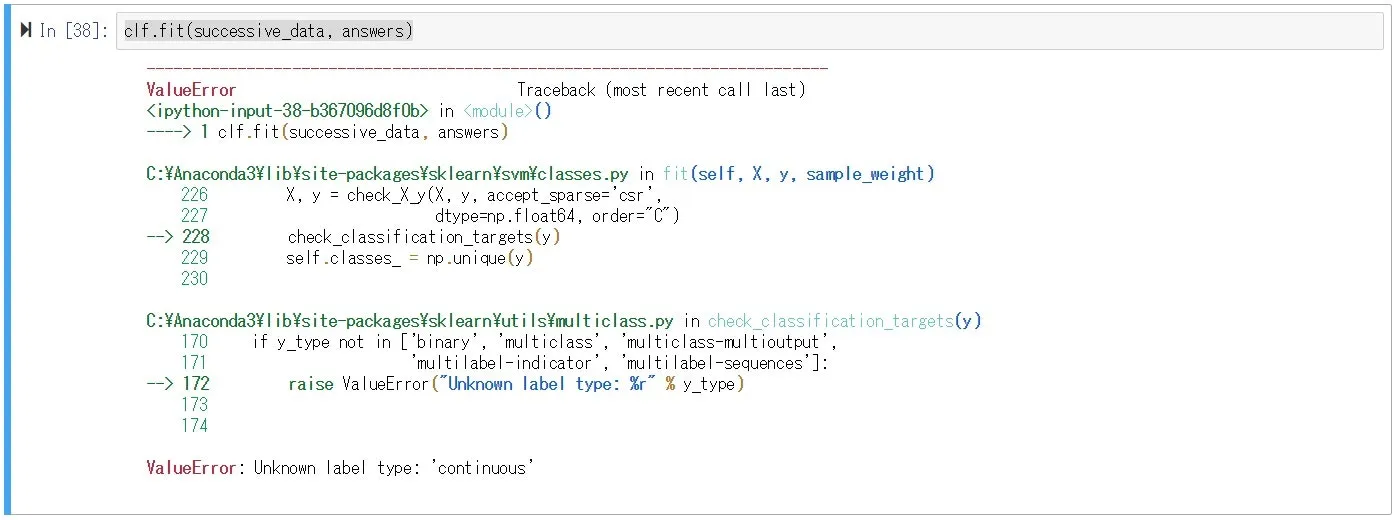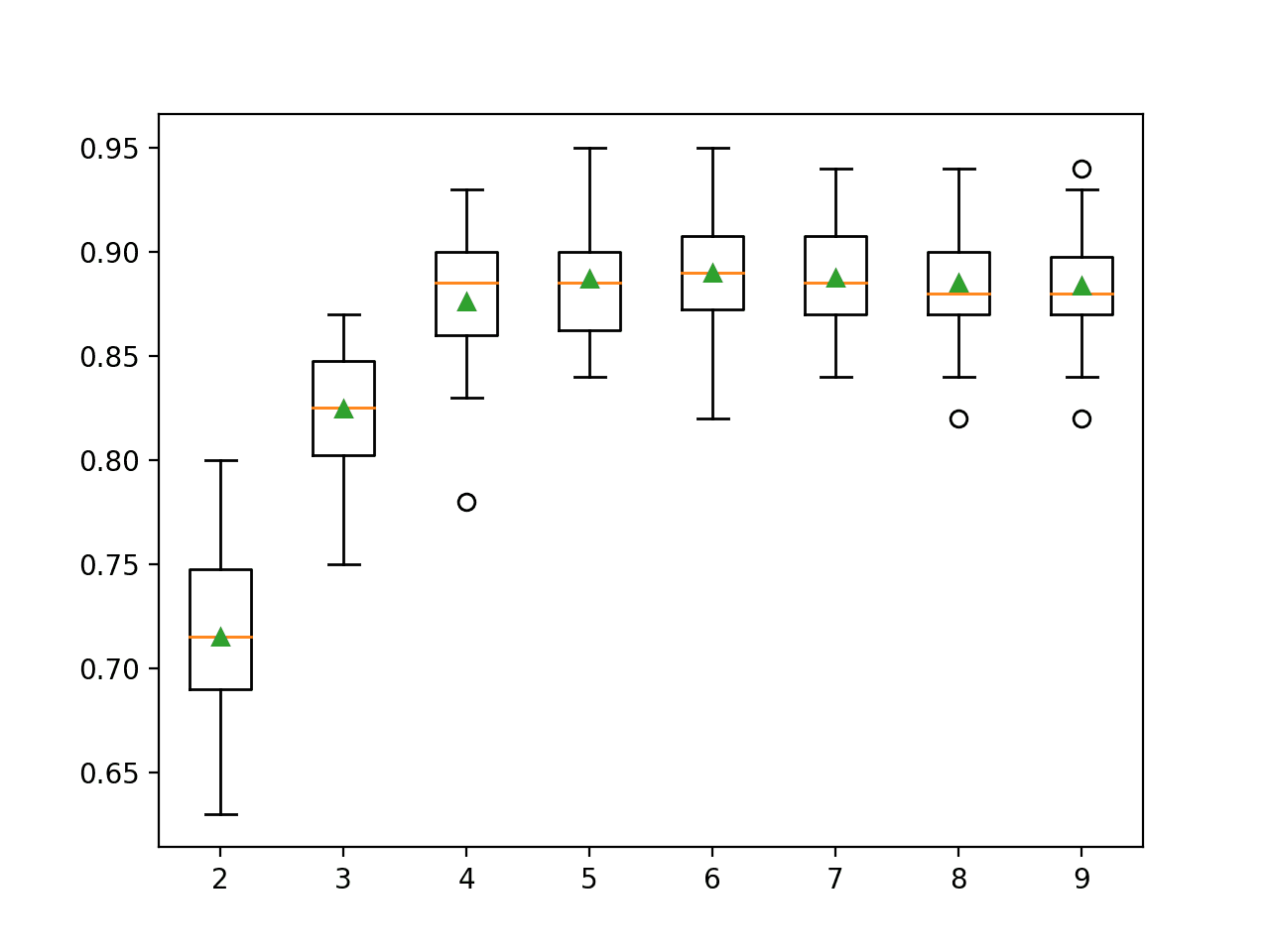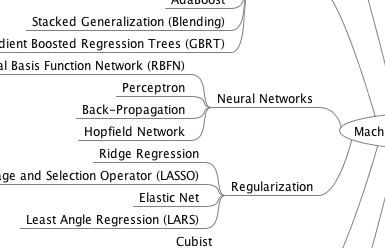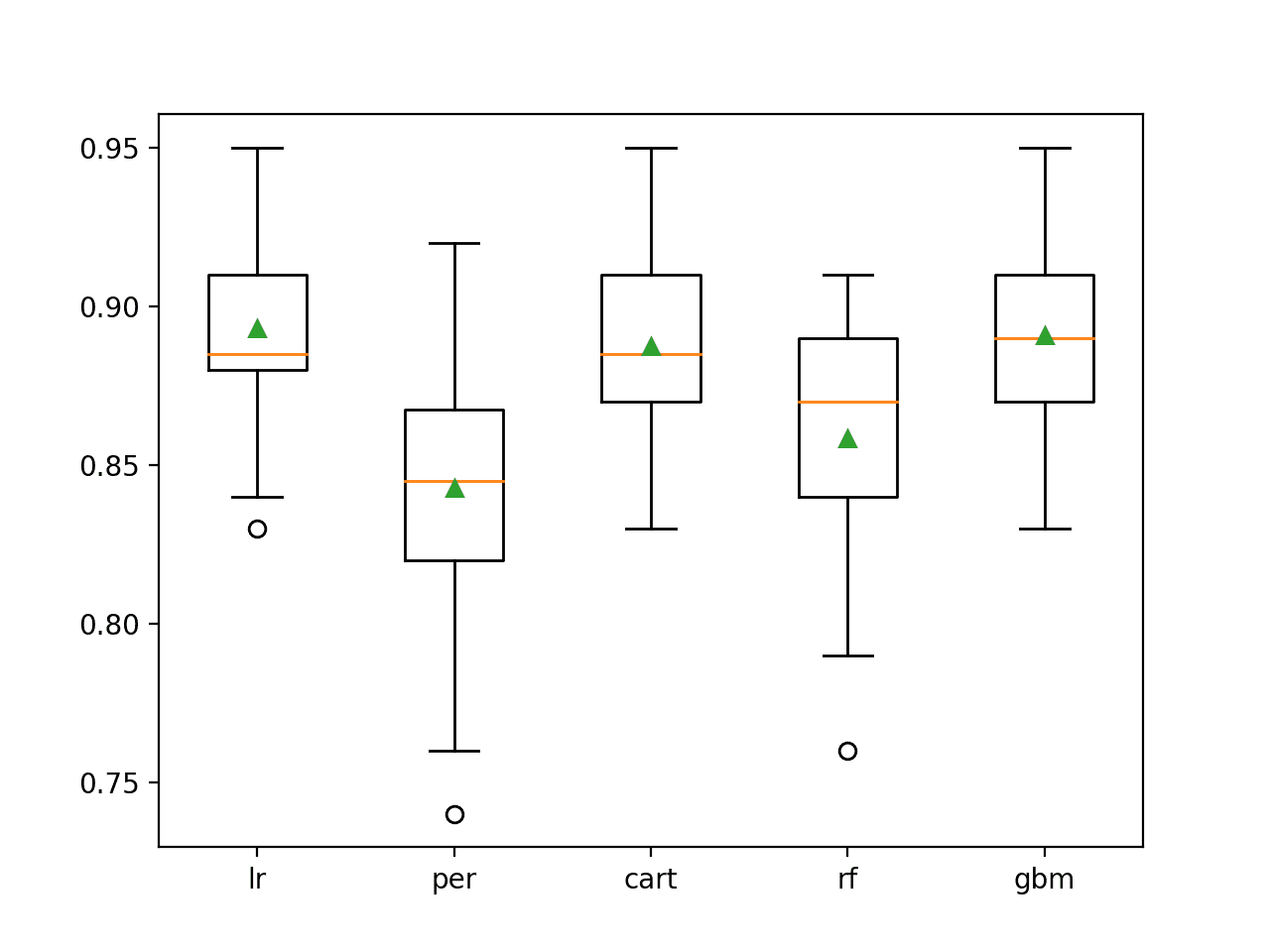Valueerror Unknown Label Type Continuous
Definition of ValueError: Unknown label type continuous
ValueError: Unknown label type continuous is an error that arises when the target variable in a supervised machine learning model is continuous. Machine learning models are designed to handle only categorical or discrete target variables, but not continuous ones. When a continuous target variable is encountered, the model throws a ValueError, indicating that it cannot process such a target variable.
Reasons for ValueError: Unknown label type continuous
The main reason for ValueError: Unknown label type continuous is the model’s inability to handle continuous target variables. Machine learning models are typically built to classify or predict discrete categories, making them unsuitable for dealing with continuous values.
Common scenarios leading to ValueError: Unknown label type continuous
This error often occurs in regression tasks where the target variable is continuous. Regression models, such as decision trees or logistic regression, are designed for predicting continuous values. However, when these models encounter a continuous target variable, they throw a ValueError.
Potential solutions for ValueError: Unknown label type continuous
To resolve ValueError: Unknown label type continuous, consider the following solutions:
1. Check the target variable: Ensure that the target variable you are using is categorical or discrete. If it is continuous, consider using a different model suitable for regression tasks, such as RandomForestRegressor or KNN regression.
2. Use label encoding: If your target variable has a limited number of unique values, you can convert it into categorical format using label encoding. The LabelEncoder function in Python’s scikit-learn library can be used for this purpose.
Examples and explanations of ValueError: Unknown label type continuous
Let’s consider an example to understand ValueError: Unknown label type continuous better. Suppose we have a dataset for predicting housing prices, where the target variable is the price of the house. Since the price is a continuous value, using a classification model like a decision tree would result in a ValueError.
Instead, we should use a regression model, such as RandomForestRegressor, that can handle continuous target variables. By using an appropriate model, we can avoid the ValueError and obtain accurate predictions for the housing prices.
Best practices to avoid ValueError: Unknown label type continuous
To avoid ValueError: Unknown label type continuous, follow these best practices:
1. Understand your data: Before applying any machine learning model, analyze your data and understand the nature of your target variable. Determine whether it is continuous or discrete and select an appropriate model accordingly.
2. Choose the right model: When working with a continuous target variable, use regression models that are specifically designed for regression tasks, such as RandomForestRegressor or KNN regression.
3. Preprocess your data: If your target variable is continuous but has limited unique values, consider converting it into a categorical format using label encoding. This will allow you to use classification models without encountering a ValueError.
Conclusion of ValueError: Unknown label type continuous
ValueError: Unknown label type continuous is a common error that occurs when a machine learning model encounters a continuous target variable. This error indicates that the model cannot handle continuous values and requires categorical or discrete target variables. By understanding the nature of your target variable and selecting an appropriate model, you can prevent this error and obtain accurate predictions.
Unknown label type continuous decision tree, ValueError: Unknown label type unknown, Unknown label type continuous logistic regression, LabelEncoder trong Python, RandomForestRegressor, KNN regression, Pandas label encoding, Classification metrics can’t handle a mix of binary and continuous targets are all keywords related to this topic.
FAQs
Q1. What should I do if my target variable is continuous?
If your target variable is continuous, you should use regression models that are designed to handle continuous values. Some examples of regression models are RandomForestRegressor and KNN regression.
Q2. Can I use a decision tree for a regression task with a continuous target variable?
No, decision trees are primarily used for classification tasks where the target variable is categorical or discrete. If you have a continuous target variable, you should use regression models instead.
Q3. How can I convert a continuous target variable into a categorical format?
If your continuous target variable has a limited number of unique values, you can convert it into a categorical format using label encoding. The LabelEncoder function in Python’s scikit-learn library can be used for this purpose.
Q4. Why do classification metrics fail when there is a mix of binary and continuous targets?
Classification metrics are designed to evaluate models that predict discrete or categorical target variables. When there is a mix of binary and continuous targets, these metrics fail because they cannot handle continuous values. It is essential to use appropriate evaluation metrics designed for regression tasks in such scenarios.
Unknown Label Type: Continuous
Keywords searched by users: valueerror unknown label type continuous Unknown label type continuous decision tree, ValueError: Unknown label type unknown, Unknown label type continuous logistic regression, LabelEncoder trong Python, RandomForestRegressor, KNN regression, Pandas label encoding, Classification metrics can t handle a mix of binary and continuous targets
Categories: Top 84 Valueerror Unknown Label Type Continuous
See more here: nhanvietluanvan.com
Unknown Label Type Continuous Decision Tree
Introduction
In the field of machine learning and data mining, decision trees are widely used for their simplicity and interpretability. Decision trees are powerful tools for solving both classification and regression problems. However, traditional decision trees are limited in their ability to handle continuous label types. To overcome this limitation, researchers have proposed a novel approach known as the unknown label type continuous decision tree. In this article, we will delve into the intricacies of this unique tree-based algorithm and explore its advantages, applications, and considerations.
Understanding Unknown Label Type Continuous Decision Trees
1. What is an unknown label type continuous decision tree?
An unknown label type continuous decision tree is an extension of the traditional decision tree algorithm that can handle continuous label types. Unlike regular decision trees, which are designed for classifying discrete labels, this specialized tree structure is capable of accurately predicting continuous values.
2. How does the unknown label type continuous decision tree work?
The underlying algorithm of the unknown label type continuous decision tree is based on the concept of binary partitioning. It recursively partitions the feature space into weighted intervals until convergence is achieved. Each partition is associated with a range of continuous label values, allowing it to effectively handle continuous label types.
3. What are the advantages of using an unknown label type continuous decision tree?
– Handling continuous label types: The primary advantage of this algorithm is its ability to handle continuous label types seamlessly. It can effectively predict numerical values, making it suitable for regression problems.
– Interpretable results: Similar to traditional decision trees, unknown label type continuous decision trees produce easily interpretable models. The resulting tree structure provides clear insights into the decision-making process employed by the algorithm.
– Robustness to noise: The algorithm is relatively robust to noise in the training data, enabling it to provide reasonably accurate predictions even in the presence of outliers or missing values.
4. Are there any limitations associated with unknown label type continuous decision trees?
– Complexity of training: Training an unknown label type continuous decision tree can be computationally expensive due to the necessity for adaptive partitioning of the feature space. This may limit its scalability for large datasets.
– Overfitting: The algorithm is prone to overfitting when confronted with noisy or imbalanced data. Adequate regularization techniques, such as pruning or cross-validation, should be applied to mitigate this issue.
– Sensitivity to parameter tuning: While the algorithm offers more flexibility compared to traditional decision trees, it also introduces the challenge of tuning hyperparameters effectively. Optimal parameter settings should be determined through experimentation and cross-validation.
Applications of Unknown Label Type Continuous Decision Trees
1. Regression problems:
Unknown label type continuous decision trees are particularly well-suited for regression tasks, where the goal is to predict continuous values. These decision trees have been successfully applied in diverse domains, including finance, healthcare, and energy monitoring, to forecast stock prices, patient readmission rates, and energy consumption, respectively.
2. Handling missing data:
In real-world datasets, missing values can be a common occurrence. Unknown label type continuous decision trees offer robustness against the presence of missing data. By adaptively partitioning the feature space, the algorithm can effectively utilize the available information to make accurate predictions.
3. Outlier detection:
Outliers, or extreme values, can significantly impact the performance of predictive models. Unknown label type continuous decision trees can identify outliers during the training process due to their binary partitioning nature. This makes them useful for detecting anomalous data points and aiding in data cleansing tasks.
FAQs
1. Can unknown label type continuous decision trees handle categorical features?
Yes, unknown label type continuous decision trees can handle both continuous and categorical features. They utilize appropriate partitioning strategies based on the type of feature under consideration.
2. How can I resolve the computational complexity associated with training unknown label type continuous decision trees?
To alleviate the computational burden, techniques such as parallel computing or feature selection can be employed. Additionally, considering a subset of features or applying dimensionality reduction techniques can reduce the training time.
3. Are there any software libraries available for implementing unknown label type continuous decision trees?
Yes, various machine learning libraries, such as scikit-learn in Python, provide implementations for unknown label type continuous decision trees. These libraries offer easy-to-use interfaces for training and evaluating models using this algorithm.
4. Can I use unknown label type continuous decision trees for binary classification tasks?
While unknown label type continuous decision trees are primarily designed for regression problems, they can be adapted for binary classification tasks. By thresholding the predicted continuous values, they can classify instances into two classes.
Conclusion
Unknown label type continuous decision trees provide a valuable extension to the traditional decision tree algorithm, enabling accurate predictions for continuous label types. Despite some limitations, their interpretability, robustness to noise, and handling of missing data make them a useful tool for various domains. By considering the unique characteristics of this algorithm, researchers and practitioners can leverage its potential to effectively solve regression problems.
Valueerror: Unknown Label Type Unknown
Introduction
In the world of programming, errors are inevitable. One common error that programmers encounter is the “ValueError: Unknown label type unknown.” This article aims to delve into this error and provide a detailed understanding of its causes, possible solutions, and frequently asked questions (FAQs). Whether you are a beginner programmer or an experienced developer, this article will help you navigate through this error and find effective solutions.
Understanding the ValueError: Unknown label type unknown
The “ValueError: Unknown label type unknown” error is usually encountered when working with machine learning algorithms, especially during classification tasks. This error typically occurs when the machine learning model is given an unknown or unsupported label type, thereby hindering the execution of the algorithm. The label type refers to the specific class or category that the algorithm is trying to predict or classify the data into.
Causes of the ValueError: Unknown label type unknown
1. Invalid label data: One possible cause of this error is invalid or inconsistent label data. This can happen when the labels assigned to the data samples do not correspond to the expected label format for the machine learning algorithm.
2. Missing label data: If the dataset contains missing labels or incomplete information, this error may arise. Machine learning algorithms rely on complete and accurate labels to make predictions, and any missing or undefined labels can lead to the “Unknown label type unknown” error.
3. Incorrect data preprocessing: In some cases, the error may be a result of improper data preprocessing. If the input data is not properly preprocessed, it may not conform to the format expected by the machine learning algorithm, leading to label type errors.
Solutions to the ValueError: Unknown label type unknown
1. Check label data consistency: Begin by inspecting the labels used in your dataset. Ensure that all labels are in the correct format and consistent with the classification task at hand. If necessary, reformat or fix the labels to match the required format.
2. Handle missing label data: If missing or incomplete label data is causing the error, consider employing techniques such as label imputation or data interpolation to fill in the missing values. Additionally, you may need to remove or exclude samples with incomplete labels from your dataset.
3. Verify data preprocessing steps: Double-check your data preprocessing pipeline to ensure it is correctly transforming the input data into the expected format. Ensure that you have properly handled categorical variables, scaled numerical features, and applied any necessary encoding or one-hot encoding.
4. Examine label encoder/encoder compatibility: If you are using label encoding or encoding techniques to transform categorical labels into numerical equivalents, ensure that the encoder used is compatible with the machine learning algorithm being employed. Some algorithms may require specific encoding techniques or handle categorical data in different ways.
5. Use compatible algorithms: Ensure that the chosen machine learning algorithm is suitable for your classification task and the type of labels you are using. Different algorithms may have specific requirements regarding label types. Consider exploring alternative algorithms if the current one is incompatible with your labels.
FAQs (Frequently Asked Questions)
Q1: I am receiving the “ValueError: Unknown label type unknown” error. How can I identify the root cause of the problem?
A: To identify the root cause, first, examine your label data and check for consistency, completeness, and formatting errors. Review the preprocessing steps applied to your data, such as data encoding, scaling, and feature extraction. Additionally, cross-verify the compatibility between the chosen machine learning algorithm and the label type you are using.
Q2: What might be the consequences of ignoring the “ValueError: Unknown label type unknown” error?
A: Ignoring this error can lead to incorrect predictions, flawed analysis, or even program crashes. If the label type is not handled correctly, it may negatively impact the performance and accuracy of your machine learning model.
Q3: Can this error occur with any machine learning algorithm?
A: While this error can occur with various machine learning algorithms, it is more commonly seen with classification algorithms that require explicit labels for their training and prediction processes.
Q4: How can I fix the “Unknown label type” error when dealing with text classification?
A: When working with text classification, ensure that your labels are formatted as strings and not integers or any other unsupported format. Text classification problems often require a specific label type, such as a string or list of strings, depending on the algorithm used.
Q5: What should I do if I cannot find the source of the error?
A: If you are unable to identify the source of the error, consider seeking help from online programming communities, forums, or consulting with more experienced developers. Sharing your code and the specific error message will facilitate others in providing appropriate guidance.
Conclusion
The “ValueError: Unknown label type unknown” error can be frustrating when encountered during machine learning classification tasks. Understanding its causes and implementing effective solutions will help you overcome this error and successfully process your data with the chosen algorithm. By ensuring data consistency, preprocessing accuracy, and appropriate label handling, you can enhance the performance of your machine learning models and achieve more accurate classification results.
Images related to the topic valueerror unknown label type continuous

Found 35 images related to valueerror unknown label type continuous theme





![SOLVED] Valueerror: unknown label type: 'continuous' Solved] Valueerror: Unknown Label Type: 'Continuous'](https://itsourcecode.com/wp-content/uploads/2023/05/valueerror-unknown-label-type-continuous.png)
























![SOLVED] Valueerror: unknown label type: 'continuous' Solved] Valueerror: Unknown Label Type: 'Continuous'](https://itsourcecode.com/wp-content/uploads/2021/01/IT-SOURCECODE_ICON-07.jpg)













Article link: valueerror unknown label type continuous.
Learn more about the topic valueerror unknown label type continuous.
- How to Fix: ValueError: Unknown label type: ‘continuous’
- Unknown label type: ‘continuous’ using sklearn in python …
- Fix ValueError: Unknown label type: ‘continuous’ In scikit-learn
- ValueError: Unknown label type: ‘continuous’ – Kaggle
- Python ValueError: Unknown Label Type: ‘continuous’
- Logistic Regression not working because of unknown label …
- ValueError: Unknown label type: ‘continuous’ #499 – GitHub
See more: nhanvietluanvan.com/luat-hoc